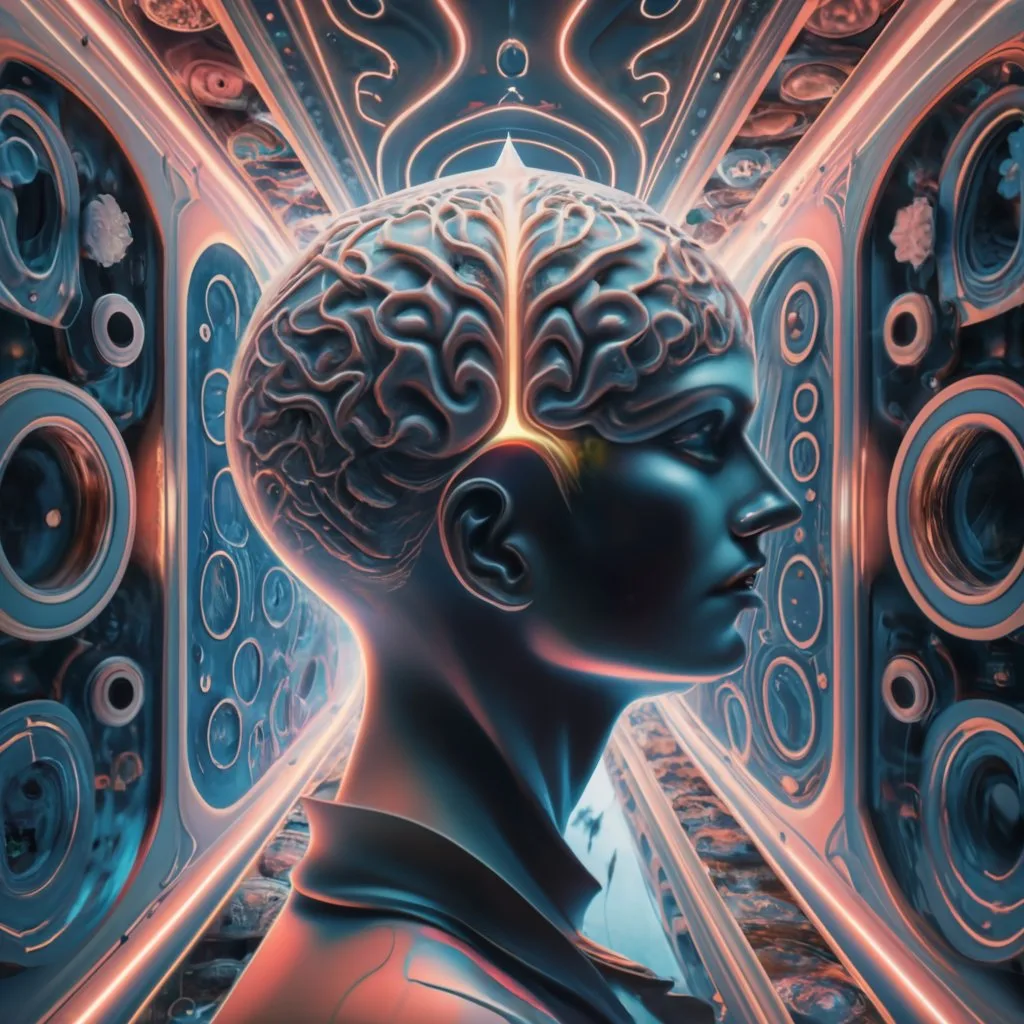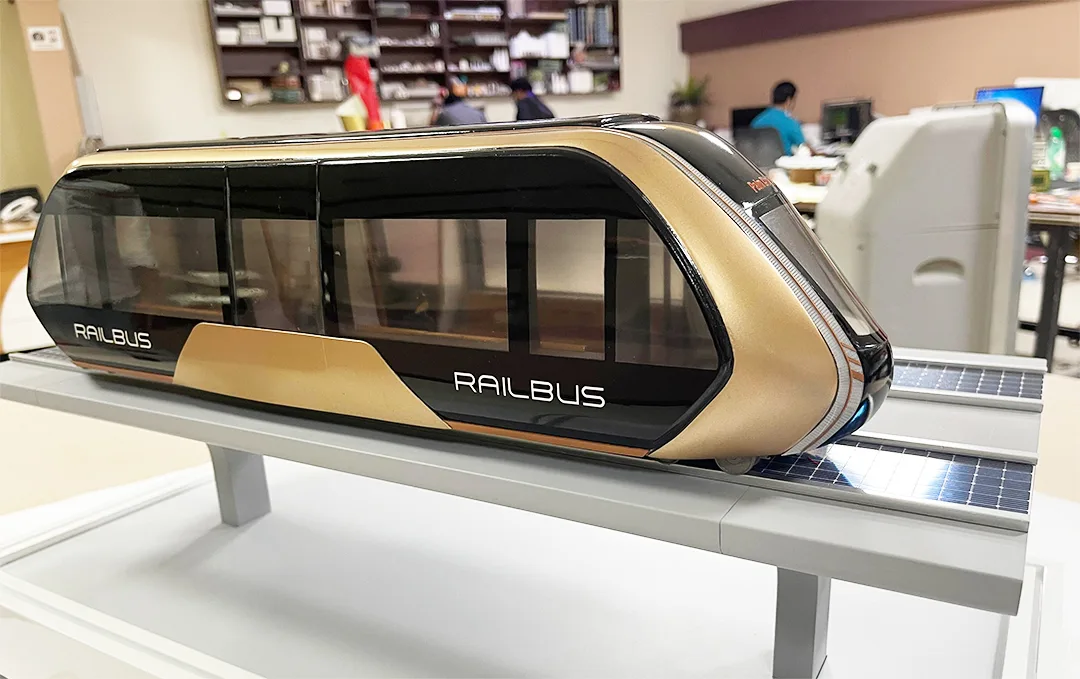HOW AI & VR TECHNOLOGIES WILL DISRUPT FUTURE EDUCATION
Artificial intelligence (AI) and virtual reality (VR) technologies have the potential to revolutionize the education sector. These cutting-edge technologies offer new opportunities for personalization, engagement, and innovation in education. By leveraging AI and VR, educators can create a dynamic learning environment that allows students to learn in new and innovative ways. The integration of AI and VR in education can help to address several challenges faced by the education system such as the shortage of qualified teachers, lack of access to education, and the need for personalized learning experiences. In this research paper, we will explore the current and future use of AI and VR in education and how these technologies can help to improve learning outcomes and provide new opportunities for learners. The advancements in technology are rapidly changing the way we live and work, and education is no exception. Artificial Intelligence (AI) and Virtual Reality (VR) are two technologies that are expected to play a major role in shaping the future of education. The integration of these technologies in the education sector promises to bring about a significant shift in the way students learn, interact and engage with information.
Introduction:
Education has been a critical factor in the development of society. Over the years, technology has played an increasingly important role in education, and the advent of AI and VR technologies has the potential to change the education sector forever. These technologies offer new opportunities for educators and learners to engage with learning materials in new and innovative ways, thereby providing a more personalized and effective learning experience.
Applications of AI in Education:
AI technology can be integrated into education in a number of ways, including the use of AI-powered tutors, intelligent assessment tools, and personalization algorithms. AI-powered tutors can provide personalized feedback and support to students, helping to fill the gap left by a shortage of qualified teachers. Intelligent assessment tools can help to improve the accuracy and reliability of assessments and provide students with instant feedback on their performance. Personalization algorithms can be used to tailor the learning experience to each student’s individual needs and learning style.
VR technology can be used to create immersive and interactive learning environments that can engage students and provide a deeper understanding of complex concepts. VR can be used in a variety of educational settings, including science and technology, history, and geography. For example, students can explore historical events, scientific phenomena, and geological processes in a virtual environment, allowing them to gain a deeper understanding of the subject matter.
Personalized learning: AI and VR technologies have the ability to provide a personalized learning experience for students. With the help of AI algorithms, educational systems can provide customized curriculum, adapt to student’s learning pace and provide feedback in real-time. In addition, VR simulations can provide a hands-on learning experience in subjects such as history, science, and mathematics.
Improved accessibility: With VR, students can have access to educational content from anywhere and at any time, which could greatly increase the accessibility of education to people who may face various challenges such as geographic, economic or physical barriers.
Enhanced Engagement: VR provides an interactive and immersive experience that can engage students more deeply in the learning process and help them retain information better. Additionally, AI can be used to gamify education, making learning more enjoyable and motivating for students.
Better assessment and evaluation: AI and VR technologies can facilitate automated and objective evaluation of students’ performance, providing a more efficient and accurate assessment system.
Challenges and limitations:
Cost: The adoption of AI and VR technologies in education requires significant investments in terms of hardware and software, which could limit their widespread adoption in schools and universities, especially in underdeveloped countries.
Ethical concerns: There are ethical concerns surrounding the use of AI and VR in education, particularly related to privacy and security. Additionally, there is a need for proper guidelines to ensure that these technologies are not misused for malicious purposes.
Resistance to change: The integration of new technologies in education often meets resistance from teachers and students who may be unfamiliar with them. There is a need for proper training and support to help overcome this resistance.
While the integration of AI and VR technologies in education holds great promise, there are also a number of challenges that must be addressed. One of the major challenges is ensuring that these technologies are used in a way that is ethical and does not perpetuate existing biases. Another challenge is ensuring that the education system is equipped to take full advantage of these technologies and that educators and learners have the necessary skills and knowledge to use them effectively.
The integration of AI and VR technologies into education has the potential to completely revolutionize the way students learn. With advancements in these fields, teachers can now provide immersive and interactive learning experiences that go beyond the traditional textbook approach.
Artificial Intelligence has the capability to personalize learning for each student, tailoring instruction to their unique strengths, weaknesses and learning styles. AI can also analyze students’ performance in real-time, offering instant feedback and suggestions for improvement. This can save teachers valuable time and increase student engagement.
Virtual Reality technology provides an unparalleled level of immersion and realism, allowing students to experience and interact with new environments, cultures and historical events in a way that was never possible before. VR can also create a safe and low-stakes environment for students to practice and apply what they have learned.
Another benefit of AI and VR technologies in education is that they can help bridge the skills gap between what is taught in schools and the skills required in the workforce. For example, virtual simulations can be used to train students in hands-on technical skills or in complex problem-solving skills that would be difficult or expensive to teach otherwise.
However, despite the potential benefits, the integration of AI and VR into education also raises important questions about ethics, privacy, and accessibility. It is important for policymakers and educators to consider these issues and develop regulations and guidelines that ensure that these technologies are used fairly and responsibly.
In conclusion, AI and VR technologies have the potential to revolutionize education and provide students with more engaging, interactive and personalized learning experiences. As these technologies continue to advance, it will be crucial for policymakers and educators to work together to ensure that they are used in a way that benefits all students, regardless of their background or circumstances. Artificial Intelligence (AI) and Virtual Reality (VR) technologies have already started to change the way we live, work and interact with each other. The education sector is no exception, and these two technologies have the potential to significantly disrupt the future of education. In this article, we will explore how AI and VR technologies will shape the future of education and the benefits and challenges that come with this transformation.
First and foremost, AI has the potential to make education more personalized and adaptive. With the help of AI algorithms, education systems can be designed to cater to the specific needs and learning styles of each student. AI can analyze students’ performance data and provide customized learning plans, based on the student’s strengths and weaknesses. Additionally, AI-powered tutors can provide students with instant feedback and guidance, helping to keep students on track and engaged in the learning process.
VR, on the other hand, has the potential to revolutionize the way students experience and interact with the learning material. VR provides students with an immersive and interactive experience, where they can visualize and explore complex concepts in a more engaging and memorable way. For example, VR can be used to create virtual field trips, simulations and gamified learning experiences that can help students better understand and retain information. Moreover, VR can also be used to create inclusive and accessible learning environments, allowing students with disabilities or those who live in remote locations to access quality education.
Another benefit of AI and VR in education is that they can make learning more accessible and affordable. AI can help reduce the cost of education by automating routine tasks and providing students with personalized learning experiences at scale. VR can also make education accessible by removing the constraints of time and geography, allowing students to learn from anywhere, at any time.
However, there are also challenges associated with the integration of AI and VR in education. One of the biggest challenges is ensuring that these technologies are used in an ethical and responsible way. AI systems need to be trained on diverse data to avoid biases, and it is important to ensure that students’ data is protected and used ethically. Moreover, the impact of AI and VR on the job market is also a concern, and it is important to ensure that students are being prepared for the jobs of the future, and not just for the jobs of the present.
The integration of AI and VR technologies in education has the potential to bring about significant benefits and improvements in the way students learn. However, it is important to approach these technologies with caution and to ensure that they are used in an ethical and responsible way. The future of education is promising, and AI and VR have the potential to be key drivers of change, making education more personalized, interactive, and accessible to all.
Conclusion:
In conclusion, the integration of AI and VR technologies in education has the potential to revolutionize the education sector, providing new opportunities for personalization, engagement, and innovation in learning. By leveraging these technologies, educators and learners can work together to create a dynamic learning environment that helps to improve learning outcomes and provide new opportunities for learners. However, it is important that these technologies are used in an ethical and responsible manner, and that the education system is equipped to take full advantage of their potential.
Author & Coach:
Professor (Dr.) Sanjay Rout
(Scientist, Technologist, Psychiatry, Legal, Journalism & Innovation Expert)
For more Thoughts (Books, Blogs) Connect:
My ambassador link: https://www.publish0x.com?a=K9b6WGnOdE
For more amazing Thoughts read below various books collections:
NFT:
https://opensea.io/accounts/0xab74ab3f7c3b0ab46c82b0dc13d0b6612123d3b9
https://app.momint.so/profile/6252a83aea6f550033dbe825/drops
https://rarible.com/islquantum369
https://solo.to/islpublication
https://www.voice.com/islpublications7
Digital:
https://notionpress.com/author/317590
https://www.overdrive.com/publishers/isl-publications
https://www.tutorialspoint.com/publisher/isl_publications?page=7
https://www.youscribe.com/isl-publications/
https://www.magzter.com/publishers/ISL-Publications
https://islpublications.gumroad.com/
https://islpublications.myinstamojo.com/
https://www.scribd.com/author/555522209/ISL-Publications
https://www.draft2digital.com/book/?publisher=Ajay%20Kumar
https://www.paranubhutifoundation.org/books/
Social Handel:
LinkedIn https://www.linkedin.com/in/drsanjaykumarout
Linktree
https://linktr.ee/Drsanjayrout
https://www.facebook.com/drsanjayrout
Twitter https://twitter.com/Drsskro
Instagram https://www.instagram.com/professordrsanjaykumarout
Medium https://medium.com/drsanjayrout
Podcast https://anchor.fm/innovationsolution-lab
YouTube https://www.youtube.com/channel/UCrbazCgJAGmQtKZdNDko2aw
https://www.youtube.com/@secretspiritul8369
https://www.youtube.com/@ISLPUBLICATIONS
Blogs https://innovationsolutionlabs.blogspot.com
https://drsanjayrout.blogspot.com
Website https://innovationsolutionlab.weebly.com
https://drsanjayrout.weebly.com
Nft
https://opensea.io/accounts/0xab74ab3f7c3b0ab46c82b0dc13d0b6612123d3b9
Behance
https://www.behance.net/drsanjayrout













